Search
Customer Satisfaction or CSAT is a widely used metric that determines your customer’s satisfaction with your brand. It is one of the essential parameters that are involved in creating an effective customer experience management (CEM) system. CSAT plays a vital role as one of the key performance indicators that help organisations understand where they’re falling short, help them identify customer pain points, and take the necessary measures needed to reduce customer churn.
A high CSAT score indicates that your customers are happy with every aspect of your brand and that you should carry on with consistently delivering the best to your customers. On the other hand, a low score indicates that customers are unhappy with your brand and might be on the verge of churning. A low CSAT causes companies to strategise and execute the required processes to turn their CSAT score around.
Keeping tabs on your CSAT scores from the get-go is an efficient way to identify loyal customers and predict when unhappy customers are about to leave. Moreover, it helps elevate your organisation’s customer experience management system.
1. Click on New Surveys and navigate to Customer Experience Survey, choose CSAT and click the Start button as shown in the below screenshot.
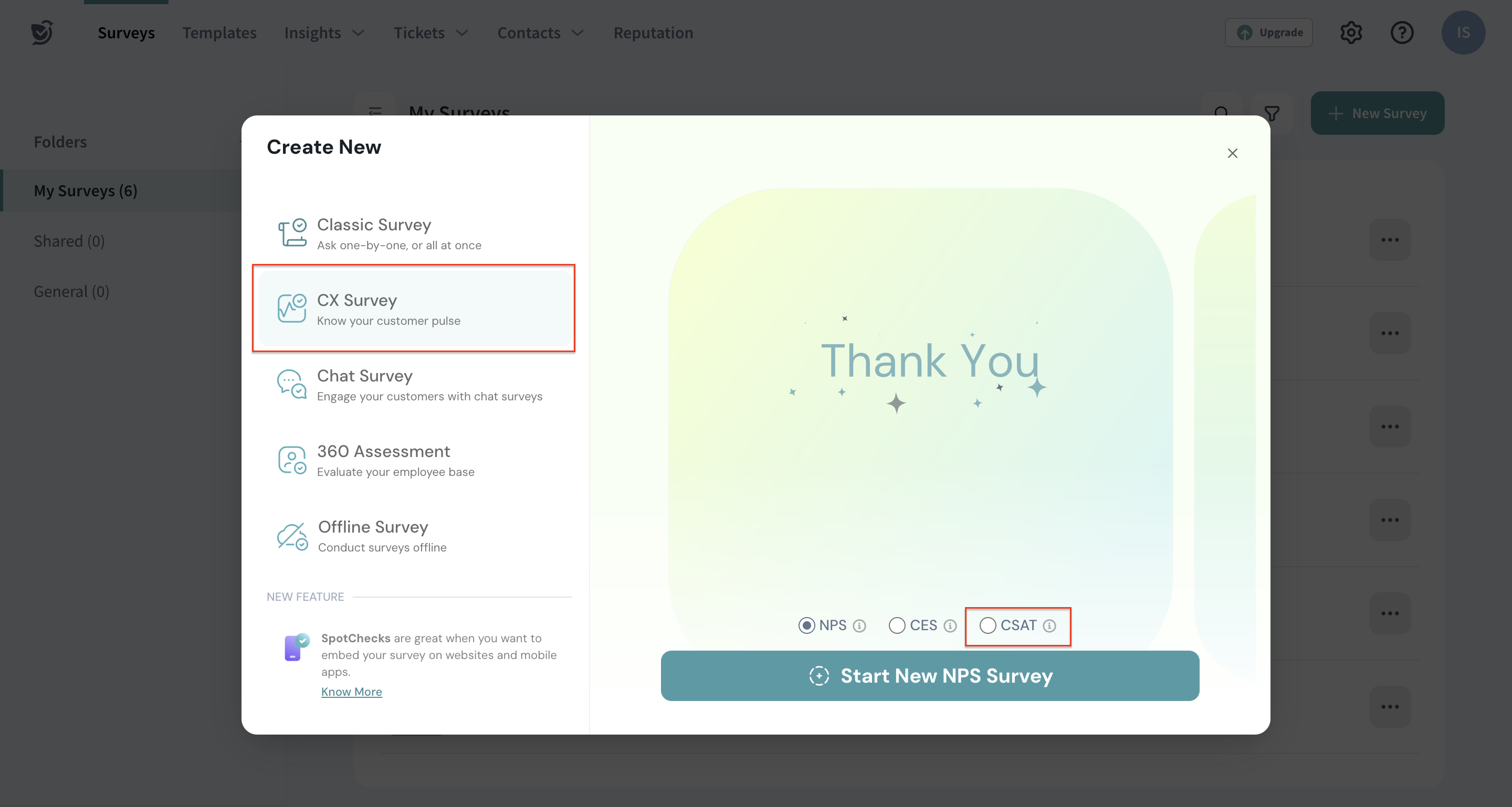
2. The first question by default is How satisfied are you with [Name]? where [Name] can be a company/organisation or product name.
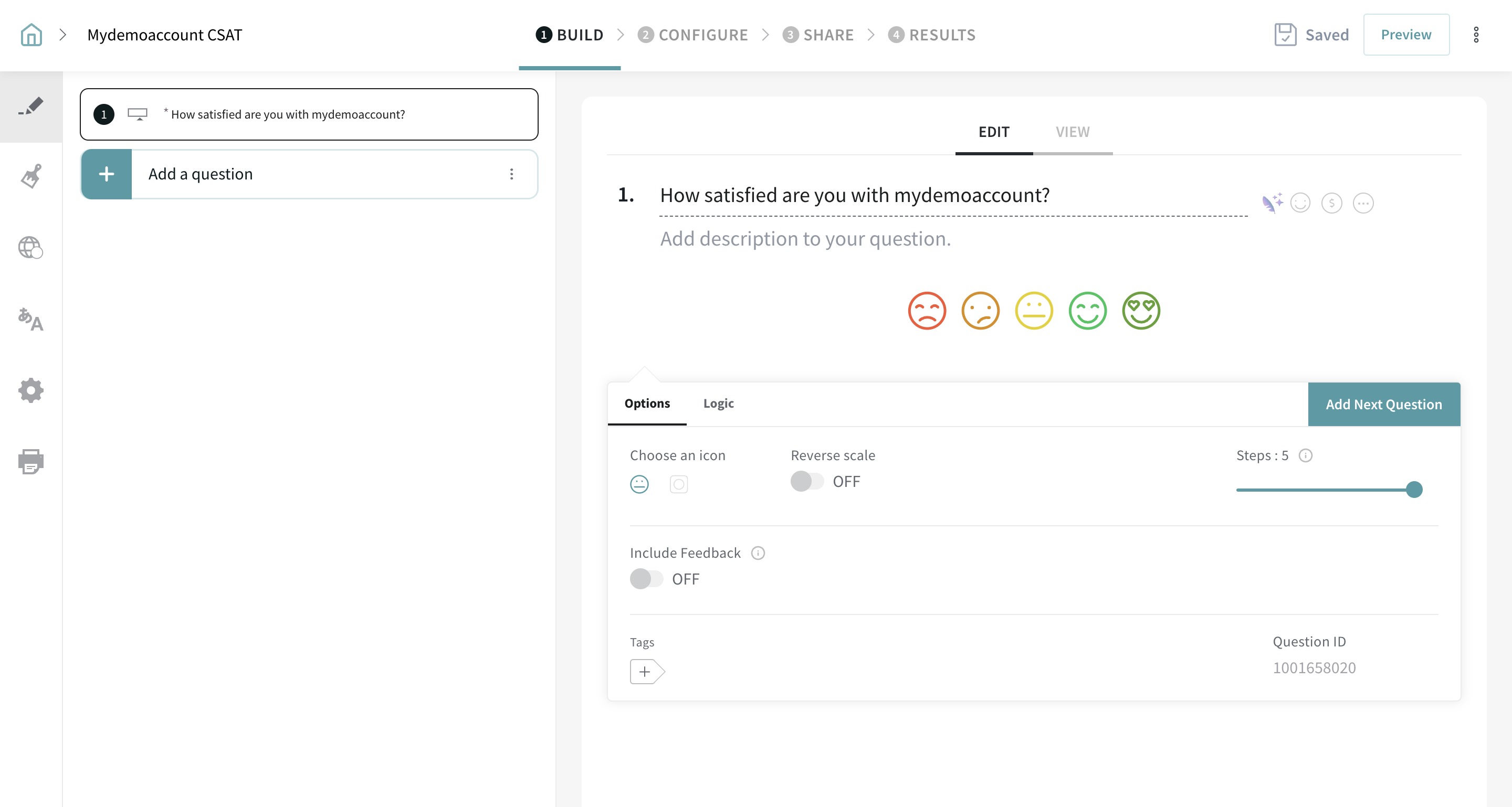
3. To add a feedback question enable the Include Feedback toggle. To customise feedback questions based on the rating then enable CSAT Feedback by rating toggle.
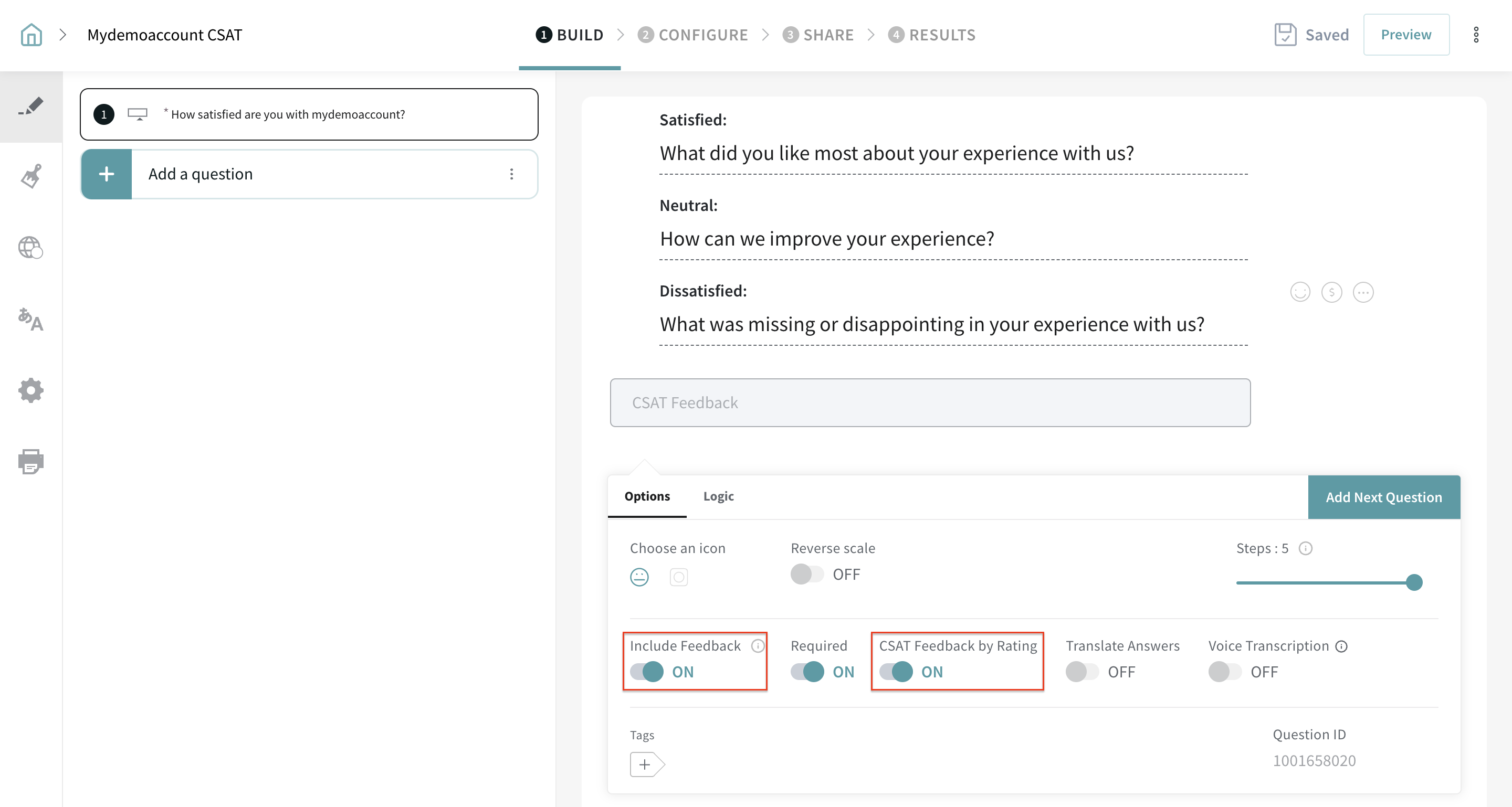
4. Now, as you can see in the example below, the feedback question is based on the ratings they have selected.
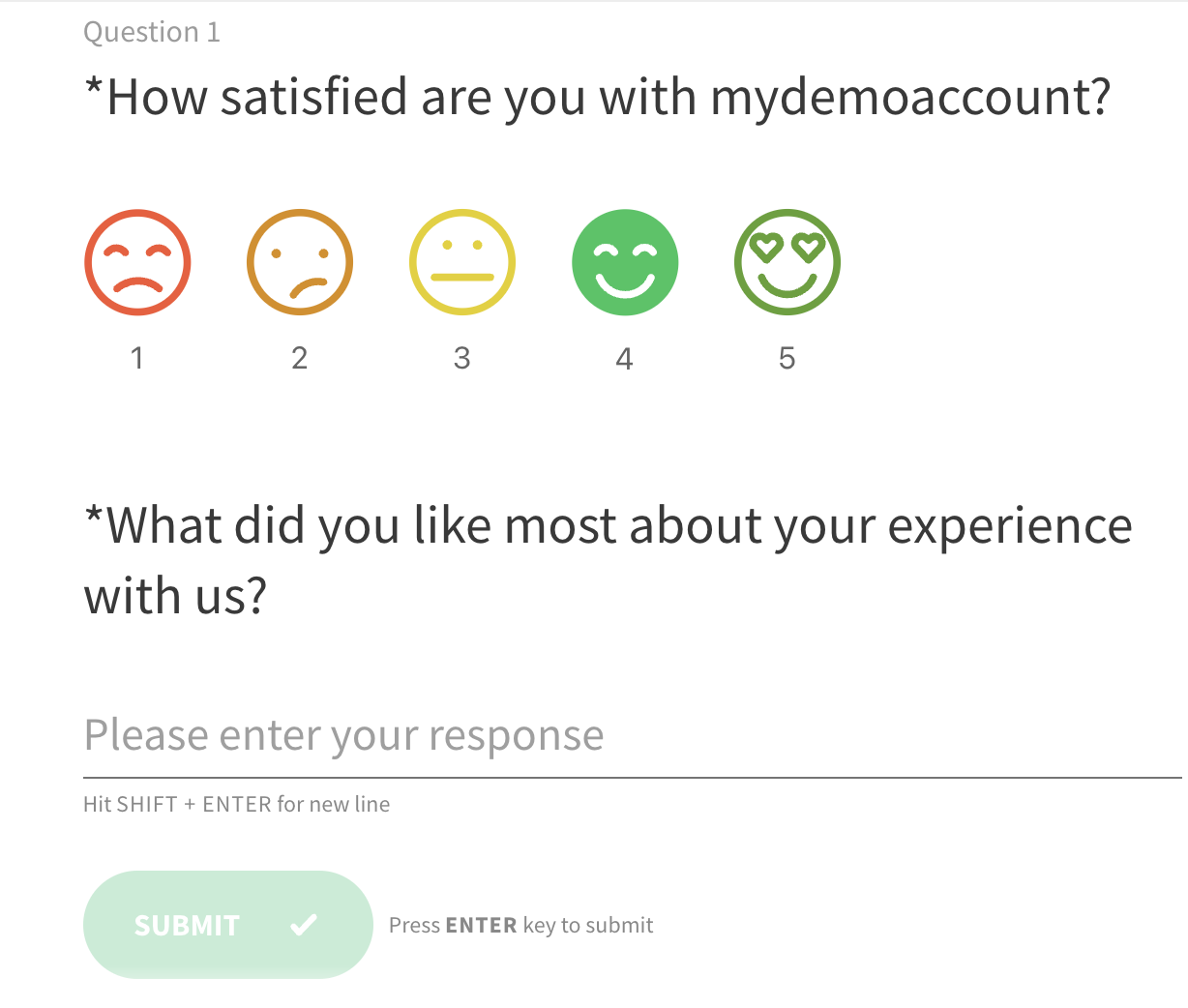
5. Once your customer starts responding to the survey, navigate to the Result section to get all the insights and CSAT score as shown in the below screenshot.
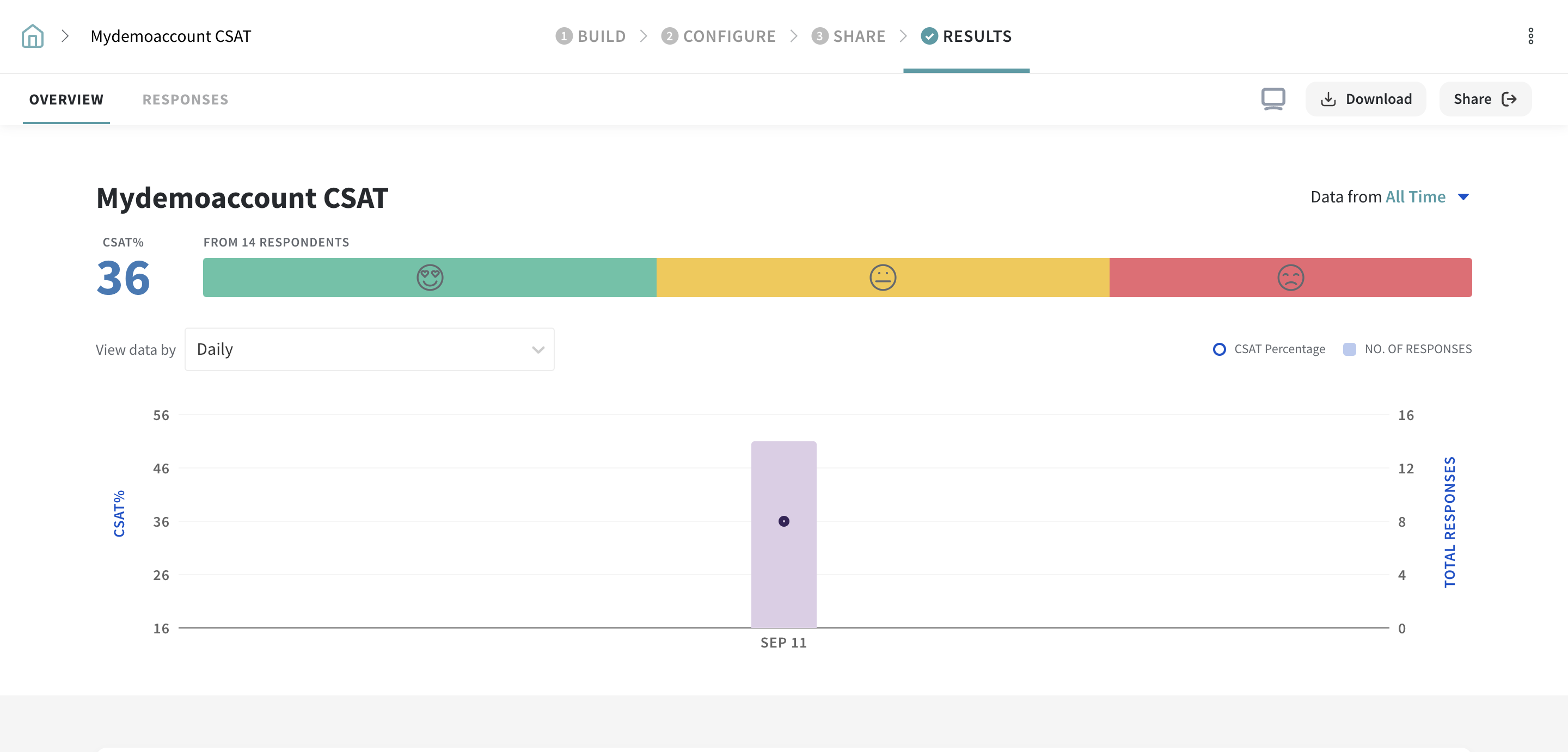
Woohoo! The CSAT is set up within no time. Now, let's learn more about CSAT.
As shown in the above screenshot, the respondents will be classified into 3 category
 are represented as green colour smileys (rated 4-5) .
are represented as green colour smileys (rated 4-5) . are represented as yellow colour smileys (rated 3).
are represented as yellow colour smileys (rated 3). are represented as red colour smileys (rated 1-2).
are represented as red colour smileys (rated 1-2).CSAT % = (Number of Respondents rated 4-5 / Total number of Respondents) X 100
Thus CSAT focuses the customer’s attention on specific touch points they were satisfied or dissatisfied with.
There are many do’s and don’ts when it comes to measuring CSAT. One lousy score is all it takes to plummet your overall CSAT. To prevent that, here are the 5 best CSAT practices to keep in mind for your company!
Surveys are the most commonly used medium for collecting CSAT scores from customers. The majority of the human population checks their email from their mobile devices. So optimising your surveys to be mobile-first is a sure-fire way to get the ratings you need.
Let your customers express their opinions and concerns freely with open-ended questions in your survey. Gain a deeper understanding of their experience and close the feedback loop effectively.
Ask customers only the relevant questions. Stick to an overall rating question rather than breaking it down into multiple redundant ones. Ask too many questions, and you’ll bear the wrath of customer churn. Avoid survey fatigue at all costs!
Once you calculate your company’s overall CSAT score, compare it with those of other companies. This way, you’ll get an idea of how well your organisation fares in comparison to others in your industry set.
Avoid over-the-top, complicated questions in your CSAT surveys and refrain from the use of complicated jargon. This can cause an increase in survey bounce rates. Ask straightforward questions that can be understood by a general audience. Customers always respond better to content they can relate to and understand.
Powered By SparrowDesk